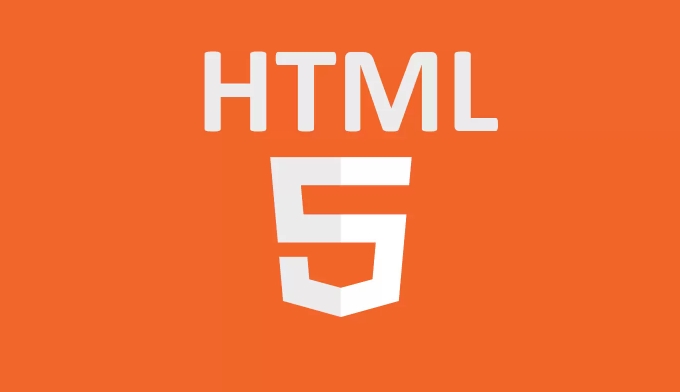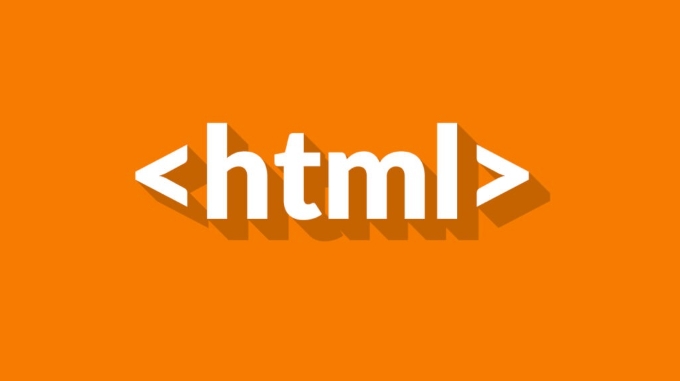How to use the CSS :target pseudo-class with HTML anchors?
Jul 09, 2025 am 12:12 AMThe CSS :target pseudo-class allows styling of a specific webpage section when it is targeted via a URL fragment. When a user clicks a link like , the browser scrolls to the element with the matching id, and :target applies styles only to that active element. For example, clicking "Jump to Box" highlights a div with #box:target { background-color: yellow; }. Common uses include tabbed content without JavaScript, form error highlighting, and in-page navigation effects. To simulate tabs: use .tab { display: none; } .tab:target { display: block; }. Tips: only one element can be targeted at a time, support is broad but not persistence-dependent, and styling or animating other elements is possible. 1. It works with HTML anchors. 2. Styles apply only when the anchor is active. 3. Ideal for lightweight interactivity. 4. Not suitable for persistent or complex behavior.

When you want to style or highlight a specific part of a webpage after someone clicks a link pointing to it, the CSS :target pseudo-class is your go-to tool. It works hand in hand with HTML anchors (#) to apply styles only when that anchor is active in the URL.

How :target and Anchors Work Together
Every time a user clicks a link like <a href="#section1"></a>, the browser scrolls to the element with the matching id="section1". The :target selector lets you apply special styles to that element once it's targeted.
For example:

<a href="#box">Jump to Box</a> <div id="box">This box gets styled when targeted</div>
And in CSS:
#box:target {
background-color: yellow;
}So when someone clicks "Jump to Box", that div will get a yellow background — until they click another link or reload the page.

Common Use Cases for :target
You don’t always want to just highlight text. Here are some practical uses:
- Tabbed content without JavaScript: You can show different sections based on which anchor is active.
- Highlighting form errors: If a user submits a form with an error in a field further down the page, you can scroll them there and highlight it.
- Simple in-page navigation effects: Add fade-ins, borders, or even subtle animations when a section becomes the target.
Here’s a basic way to simulate tabs using only HTML and CSS:
<a href="#tab1">Tab 1</a> <a href="#tab2">Tab 2</a> <div id="tab1" class="tab">Content for Tab 1</div> <div id="tab2" class="tab">Content for Tab 2</div>
.tab {
display: none;
}
.tab:target {
display: block;
}Tips and Gotchas When Using :target
-
Only one element is targeted at a time — if you have multiple
#fragments in the URL (which isn't standard), only the last one counts. - Older browsers support it well, but don’t rely on it for critical functionality unless you're sure about your audience.
- It doesn’t persist after page reload — if you need something to stay open or highlighted, use JavaScript or server-side logic instead.
Also, remember that:
- You can style more than just the targeted element by combining selectors.
- You can animate the appearance using transitions, though browser support may vary slightly.
Wrapping Up
Using :target with anchors is a clean way to add interactivity without JavaScript. It works best for simple interactions like showing content panels or highlighting sections. Just keep in mind its limitations — especially around persistence and complex behavior.
Once you get the hang of it, it's a handy trick for lightweight, accessible UI patterns.
The above is the detailed content of How to use the CSS :target pseudo-class with HTML anchors?. For more information, please follow other related articles on the PHP Chinese website!

Hot AI Tools

Undress AI Tool
Undress images for free

Undresser.AI Undress
AI-powered app for creating realistic nude photos

AI Clothes Remover
Online AI tool for removing clothes from photos.

Clothoff.io
AI clothes remover

Video Face Swap
Swap faces in any video effortlessly with our completely free AI face swap tool!

Hot Article

Hot Tools

Notepad++7.3.1
Easy-to-use and free code editor

SublimeText3 Chinese version
Chinese version, very easy to use

Zend Studio 13.0.1
Powerful PHP integrated development environment

Dreamweaver CS6
Visual web development tools

SublimeText3 Mac version
God-level code editing software (SublimeText3)
 Implementing Clickable Buttons Using the HTML button Element
Jul 07, 2025 am 02:31 AM
Implementing Clickable Buttons Using the HTML button Element
Jul 07, 2025 am 02:31 AM
To use HTML button elements to achieve clickable buttons, you must first master its basic usage and common precautions. 1. Create buttons with tags and define behaviors through type attributes (such as button, submit, reset), which is submitted by default; 2. Add interactive functions through JavaScript, which can be written inline or bind event listeners through ID to improve maintenance; 3. Use CSS to customize styles, including background color, border, rounded corners and hover/active status effects to enhance user experience; 4. Pay attention to common problems: make sure that the disabled attribute is not enabled, JS events are correctly bound, layout occlusion, and use the help of developer tools to troubleshoot exceptions. Master this
 Configuring Document Metadata Within the HTML head Element
Jul 09, 2025 am 02:30 AM
Configuring Document Metadata Within the HTML head Element
Jul 09, 2025 am 02:30 AM
Metadata in HTMLhead is crucial for SEO, social sharing, and browser behavior. 1. Set the page title and description, use and keep it concise and unique; 2. Add OpenGraph and Twitter card information to optimize social sharing effects, pay attention to the image size and use debugging tools to test; 3. Define the character set and viewport settings to ensure multi-language support is adapted to the mobile terminal; 4. Optional tags such as author copyright, robots control and canonical prevent duplicate content should also be configured reasonably.
 Best HTML tutorial for beginners in 2025
Jul 08, 2025 am 12:25 AM
Best HTML tutorial for beginners in 2025
Jul 08, 2025 am 12:25 AM
TolearnHTMLin2025,chooseatutorialthatbalanceshands-onpracticewithmodernstandardsandintegratesCSSandJavaScriptbasics.1.Prioritizehands-onlearningwithstep-by-stepprojectslikebuildingapersonalprofileorbloglayout.2.EnsureitcoversmodernHTMLelementssuchas,
 HTML for email templates tutorial
Jul 10, 2025 pm 02:01 PM
HTML for email templates tutorial
Jul 10, 2025 pm 02:01 PM
How to make HTML mail templates with good compatibility? First, you need to build a structure with tables to avoid using div flex or grid layout; secondly, all styles must be inlined and cannot rely on external CSS; then the picture should be added with alt description and use a public URL, and the buttons should be simulated with a table or td with background color; finally, you must test and adjust the details on multiple clients.
 How to associate captions with images or media using the html figure and figcaption elements?
Jul 07, 2025 am 02:30 AM
How to associate captions with images or media using the html figure and figcaption elements?
Jul 07, 2025 am 02:30 AM
Using HTML sums allows for intuitive and semantic clarity to add caption text to images or media. 1. Used to wrap independent media content, such as pictures, videos or code blocks; 2. It is placed as its explanatory text, and can be located above or below the media; 3. They not only improve the clarity of the page structure, but also enhance accessibility and SEO effect; 4. When using it, you should pay attention to avoid abuse, and apply to content that needs to be emphasized and accompanied by description, rather than ordinary decorative pictures; 5. The alt attribute that cannot be ignored, which is different from figcaption; 6. The figcaption is flexible and can be placed at the top or bottom of the figure as needed. Using these two tags correctly helps to build semantic and easy to understand web content.
 What are the most commonly used global attributes in html?
Jul 10, 2025 am 10:58 AM
What are the most commonly used global attributes in html?
Jul 10, 2025 am 10:58 AM
class, id, style, data-, and title are the most commonly used global attributes in HTML. class is used to specify one or more class names to facilitate style setting and JavaScript operations; id provides unique identifiers for elements, suitable for anchor jumps and JavaScript control; style allows for inline styles to be added, suitable for temporary debugging but not recommended for large-scale use; data-properties are used to store custom data, which is convenient for front-end and back-end interaction; title is used to add mouseover prompts, but its style and behavior are limited by the browser. Reasonable selection of these attributes can improve development efficiency and user experience.
 How to handle forms submission in HTML without a server?
Jul 09, 2025 am 01:14 AM
How to handle forms submission in HTML without a server?
Jul 09, 2025 am 01:14 AM
When there is no backend server, HTML form submission can still be processed through front-end technology or third-party services. Specific methods include: 1. Use JavaScript to intercept form submissions to achieve input verification and user feedback, but the data will not be persisted; 2. Use third-party serverless form services such as Formspree to collect data and provide email notification and redirection functions; 3. Use localStorage to store temporary client data, which is suitable for saving user preferences or managing single-page application status, but is not suitable for long-term storage of sensitive information.
 Implementing Native Lazy Loading for Images in HTML
Jul 12, 2025 am 12:48 AM
Implementing Native Lazy Loading for Images in HTML
Jul 12, 2025 am 12:48 AM
Native lazy loading is a built-in browser function that enables lazy loading of pictures by adding loading="lazy" attribute to the tag. 1. It does not require JavaScript or third-party libraries, and is used directly in HTML; 2. It is suitable for pictures that are not displayed on the first screen below the page, picture gallery scrolling add-ons and large picture resources; 3. It is not suitable for pictures with first screen or display:none; 4. When using it, a suitable placeholder should be set to avoid layout jitter; 5. It should optimize responsive image loading in combination with srcset and sizes attributes; 6. Compatibility issues need to be considered. Some old browsers do not support it. They can be used through feature detection and combined with JavaScript solutions.






